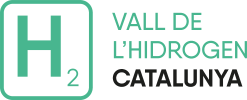Isaac Justicia now heads the technical office of the Valley
The Hydrogen Valley of Catalonia continues to grow and bring in new synergies to consolidate the country as a benchmark in the emerging value chain of green hydrogen and decarbonisation. The promoters of this strategic multi-stakeholder initiative have agreed to take steps in the coming weeks to establish a governance that will give it greater solidity. The Catalan Government (Generalitat de Catalunya), the Universitat Rovira i Virgili, Repsol, Enagás, the Tarragona Provincial Council, the Chemical Business Association of Tarragona, the Port of Tarragona, the Port of Barcelona, the Metropolitan Area of Barcelona, the Technical University of Catalonia, the Celsa Group, and the research institutes Eurecat, ICIQ and IREC are all preparing the action plan for 2023, which will be submitted to the general assembly in mid-December.
Likewise, the Hydrogen Valley of Catalonia has brought in a new director for the technical office, Isaac Justicia, who has professional experience of interacting with business and an understanding of the energy and hydrogen sector. This will enable him to lead the team that currently manages the Valley and give it fresh impetus so that it can rise to the challenges of the future and continue supporting the projects and initiatives of the more than 230 members. The 150 MW electrolyzer that will supply green hydrogen to the Tarragona petrochemical plant, promoted by the consortium initiated by Repsol and completed by Enagás Renovable, Messer and Iqoxe, is one of the Valley’s most emblematic projects.
At the same time, the Hydrogen Valley of Catalonia is strengthening inter-regional links with other similar initiatives. On 4 November, the first Forum of the Ebro Hydrogen Corridor, held in Navarre, was attended by a large number of representatives from the Valley. During the course of the forum, projects were presented and the regulatory framework, aid and incentives were discussed. The Corridor is promoted by Catalonia, the Basque Country, Navarre and Aragon and plans to multiply the capacities and synergies of hydrogen by creating a wider ecosystem. It is involved in developing geographically wider value chains in which production and consumption are joined together, industry and mobility are the main fields of application, and technological and training collaborations regarded as the way forward. The aim of all this is to become a benchmark in the European macro-region of the hydrogen society and economy.
In the week of 14 November, a representation of the Hydrogen Valley of Catalonia was part of the delegation of regions of the European Union, including Catalonia, which visited different regions in Japan, with hydrogen as one of the main topics. The delegation visited companies, technology centres and science parks with a presence of hydrogen technologies. This Europe-Japan regional visit took place within an exploratory framework of interregional cooperation between the European Union and other areas of the world. At the beginning of 2023, the Japanese regions will return the visit to Europe, and some will come to Catalonia.
